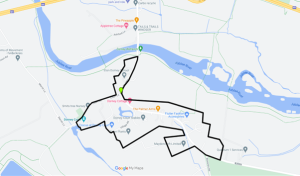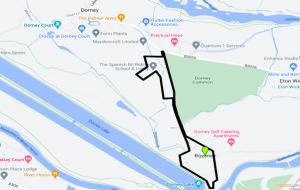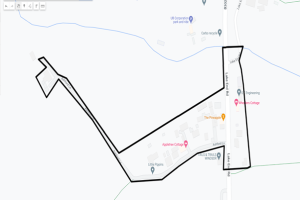Neighbourhood Plan Meeting 12th Oct 2023
Vision and Objectives
I’m sure you will all agree that we are lucky to be living in Dorney Parish with it’s rural character, cherished history, and beautiful scenery. It is one of the few unspoilt areas between Slough, Windsor and Maidenhead and must be preserved for all to enjoy and our objectives will relate to doing just that.
So, our objectives are simple and based on both the questionnaire responses and meeting feedback.
- To protect and enhance the rural quality of Dorney Parish
- The historic character of the parish must be conserved and where appropriate enhanced
- The diversity of wildlife and habitats to be preserved and encouraged
- Housing development will have a positive impact on the parish by enhancing the area in which it is constructed
- Footpaths, cycle ways and bridleways will be enhanced or constructed to ensure connectivity between places and access into the countryside from the village and transport hubs
- Formal and informal amenity green spaces will be protected and enhanced where they are of community value
- A parish with social diversity and cohesion that is also a healthy and safe place to live
We also wish to ensure that we have sustainable development and there are three main principles
- Any new development achieves high quality design and environmental standards whilst also being sympathetic to housing stock in the area
- It reflects local preferences in terms of location
- It supports community infrastructure.
This translates into the following for Dorney Parish
We believe that:
- We should aim for 20 new dwellings by 2040
- Any new development should be small scale and no greater than 10 dwellings in any one location.
- There should be development boundaries for Dorney Village. Dorney Reach, Lake End and Boveney to sustain the character of the parish, and to protect the current environmental areas, which should have at least equal protection.- William will explain this in a minute.
- There is a need for development to contribute to the quality of life for residents, including healthy lifestyles, green open spaces, safe places for active play, and to be accessible by walking and cycling.
- Construction must be in areas where all key utilities are sufficient to support additional building or subject to an improvement where required.
In summary the overriding principles for housing development in Dorney Parish are:
- It should be constructed on brown field sites or infill plots as a priority.
- It will protect, conserve, and enhance the quality of its environment including designated heritage assets and their settings.
- It will be small scale and in locations where it would support the community
- It will be of a high standard of design and reflecting the housing stock in the area of construction
- It will contribute to community infrastructure
- That existing key utilities, including fibre-optic broadband, are efficient and available or are enhanced prior to construction
- It will be of contemporary construction requiring energy efficiency and water management to be adhered to.
Defined Settlements
You have seen the plans in the hall, where we have tried to outline the settlements
We consider that there are 4 distinct settlements within the Dorney Parish. They are Dorney Reach, Dorney Village, Boveney and Lake End.
Dorney Reach Settlement consists of a small area to the north of the M4 which comprises of the area between Marsh Lane and Old Marsh Lane. The major area of the settlement is bordered by Oak Stubbs Lane, Marsh Lane, Harcourt Road and Dorney Reach Road together with all of the houses, gardens and other properties that border these roads or exist within these borders.

Dorney Village settlement consists of the roads Lake End Rd, Village Road and part of Court Lane together with all of the houses, gardens and other properties that border these roads or any of the smaller road that feed off them

Boveney Settlement consists of two main areas. One is at the top of Boveney Road to the west and the other is at the South of Boveney Road and incorporates part of the lock path. The settlement covers all the land within boundaries of the two areas together with all of the houses, gardens and other properties that border these roads or exist within these borders.

Lake End settlement consists of two roads, Lake End Road and Ashford Lane. The settlement area relates to these roads and the houses and gardens that border them.

Roads
In the questionnaire responses there was a definite message that speed limits needed to be reduced, especially on the common.
Proposed speeding limits:
Lake End Road – to 40mph until it enters Dorney Village
Common Road – to 40mph
Court Lane – to 30mph
In addition , many responses raised issues regarding parking on major roads, especially during the summer and when Dorney Lake is open to the public.
There are no easy options available but the Parish Council will pursue all possible options to allay this problem
Wellbeing
Some of the feedback related to access to Dorney Rowing Lake.
It is therefore proposed that an approach should be made to Eton College reminding them of the part that they play in our community and asking that residents should be given access to Dorney Lake when it is not open to public.
Next steps
In a minute we will be asking you for your feedback which we will then consider putting into the Neighbourhood plan. The proposed plan will then be finalised and sent to the Dorney Parish Council for their final approval.
Once they have approved it we will send it to Bucks County Council where they will consider it and ask us to make any changes they feel appropriate.
Once they have agreed it they will send it to an independent expert who will then cast his eyes over it and providing he finds it acceptable Bucks County Council will communicate with each resident in the Parish asking them to vote yes to the plan. It is really important at this stage that we get a massive yes vote.
After that everything in the plan relating to development is implemented and the Parish Council will pursue all of the other items as part of their plan.
*******
Results of Neighbourhood Plan Questionnaire
As requested at the Neighbourhood Plan Meeting at Dorney School on 18 July 2023, the results of the Questionnaire may be downloaded from the following link: Questionnaire Results – Web page version 19JUL23
Milestones for Neighbourhood Plan:
By the end of July 2023
• Meetings with residents held
• Key findings produced to enable housing requirements to be defined
• Framework of plan to be completed
By the end of August 2023
• Areas identified for potential development
• Criteria for house design to be produced for each area
• Initial neighbourhood plan produced
By the end of September 2023
• Neighbourhood plan published for residents
• Meeting held with residents for presentation and feedback
• Revised neighbourhood plan produced
By the end of October 2023
• Neighbourhood plan approved by Dorney Parish Council
• Neighbourhood plan submitted to Buckinghamshire County Council(BCC)
November 2023 onwards
• BCC reviews neighbourhood plan and provides initial approval or asks for amendments
• Agreed neighbourhood plan sent by BCC to a nominated independent expert for agreement or amendment
• Neighbourhood plan returned to Dorney Parish Council if amendments required
• Final neighbourhood plan published and all residents asked to vote by BCC
• If there is a positive vote the Neighbourhood plan will be adopted and will be applied to all future developments
This is our proposed timetable which we will endeavour to achieve but may change due to unforeseen circumstances.
The Dorney Parish Neighbourhood Plan
Developing a shared vision for our neighbourhood
A neighbourhood plan is a key part of the Government’s localism agenda for Parish Councils to develop a shared vision for their neighbourhood. Its aims are to give communities greater power to shape development by taking a more active role in the formation of planning policies at a local level – to choose where they may want new homes, what they should look like and the type of housing to meet their community’s current and emerging needs.
It gives local people a chance to create a planning document that guides and shapes all types of development in their local area. It is written by the local community, the people who know and love their area, not the remote Buckinghamshire Council.
An adopted plan is a formal statutory document that is additional to, and not a replacement for, the emerging Buckinghamshire Local Plan 2040.
What can it influence?
• The planning of new homes to meet local needs.
• A powerful tool to ensure the community gets the right types of development in the right places.
• Style and materials used in planning applications.
• Traffic management measures.
• Identify where impacts can be minimised.
• Safe walking routes.
• Continued protection of Green Belt.
What do we want to achieve?
• Protect sensitive landscapes and avoid harm to biodiversity.
• Protect characteristics that set us aside from neighbouring urban areas.
• Ensure that current listed and heritage buildings and areas are protected and not harmed by new developments.
• Identify buildings of designated interest so they are protected from demolition and development.
• Identify and minimise impact to our lanes and residential roads from through traffic.
• Preserve and enhance community facilities.
What could happen if we don’t?
We are vulnerable to developers using national planning policies to force development onto our community so that they can maximise their profits.
Without a Buckinghamshire Local Plan in place the only way we can have an impact on planning applications is by having an adopted Neighbourhood Plan.
How is the plan is being developed?
A team consisting of Parish Councillors and volunteers has been developing the foundation of the plan, looking at policies and how to formalise them into a working document.
The team who have contributed so far
• William Voaden, Parish Councillor
• Jill Dax, Parish Councillor
• Robert Stopford, Parish Councillor
• Mark Brand, resident
• Bill Dax, Dorney History Group and resident
Dorney Parish Neighbourhood Plan Designation
Dorney Parish Council has applied for and been granted designation to proceed with a Neighbourhood Plan.
Please see the application, the designation letter and Parish map attached.
Dorney_NeighbourhoodPlan_DorneyCPmap_18_07_2022
Neighbourhood Plan Designation July 2022
The following explanatory document was tabled at the October Parish Council meeting and was published in the November 2022 edition of Dorney Parish News:
